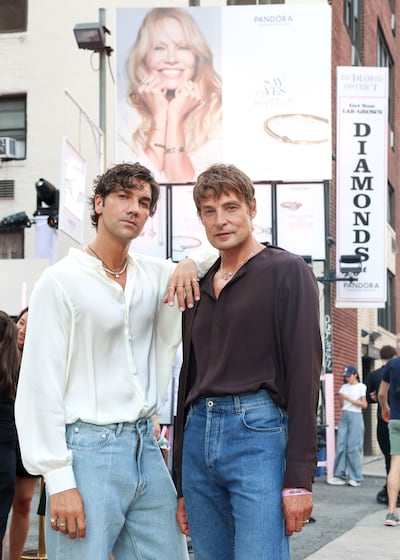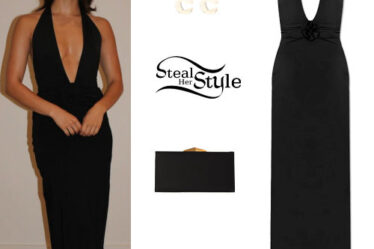
As the world’s largest jewellery brand by volume, Pandora is sold in more than 100 countries across six continents, and through more than 10,300 points of sale. Despite its scale, the creative process — carrying designs from early concept stages to end-product — remains detailed: each Pandora piece is hand-finished and passes through an average of 25 pairs of hands during the crafting process.
Pandora’s creative process is a critical component of its wider Phoenix strategy — its multi-phased plan to deliver sustainable and profitable revenue growth. Design is the second of four growth pillars, where the business aims to imbue new products with both customer insight and creative expression.
Indeed, Pandora harnesses direct links to its customers to transform ideas into tangible prototypes, beginning by identifying market trends, gathering customer feedback and evaluating local market needs. Central to Pandora’s evolving design process is purchasing 100 percent recycled silver and gold for the crafting of its jewellery — a plan it achieved a year ahead of target, as part of its plans to halve its greenhouse gas (GHG) emissions by 2030, from a 2019 baseline.
These strategies all form part of Pandora’s bid to broaden its appeal and increase its brand desirability within new markets and demographics, as sustainability and aesthetics — and how they interact — become key considerations for end consumers.
Now, BoF sits down with creative directors Francesco Terzo and A. Filippo Ficarelli for insight into Pandora’s evolving creative process, how innovation is encouraged and actioned, and how their creative ambitions are evolving.
How do you balance Pandora’s recognisable aesthetic while innovating its offering?
AFF: The exercise we are doing now is effectively all about building an identity. In people’s perceptions of Pandora, we are working with an established aesthetic. We know we have work to do to help people unlearn something, which has almost become a value for us — unlearning something in order to progress.
What we want to do now is define that aesthetic as more of a value — these charms, these bracelets, the ability to personalise your items, it’s all about allowing the customer to express themselves, and that is something we wanted to carry through the entire Pandora portfolio. From personalisation to affordability and inclusion — this is our culture and it’s something we want to broaden into the brand that we are creating.
FT: Now, we are moving from an idea to a portfolio and it’s in that portfolio that we will be able to develop different aesthetics. The role of the creative director spans curation and creation. Evolving and respecting brand heritage while building the brand’s future are very much connected; the heritage has to be present as we create the full portfolio.
The journey that we are on right now is really about bringing all of our community with us, from charms into a full jewellery brand. That thinking is what will allow clear category expansion, with explorations into projects with lab-grown diamonds.
What role does consumer insight and behaviour play in shaping Pandora’s creative direction?
AFF: As a global brand, it is important for us to work with consumer insight to capture the feelings and attitudes of our global audience. We can see interesting differences play out at different times of years, in different regions or within specific communities. It involves a lot of collaboration with different teams who can share with us more localised insights.
FT: The Pandora consumer has evolved a lot as the business has grown, so we do a lot of work to gain a social understanding of these cultural shifts and evolutions taking place. Creatively, we are placing storytelling at the heart of our creative direction. Opposite that is the people — where the story comes from in the first place.
The Pandora consumer has evolved a lot as the business has grown. We do a lot of work to gain a social understanding of the cultural shifts taking place.
We want to tell stories that are anchored in a cultural foundation, which is why we collaborate with our consumer insight team — to understand where the zeitgeist is going. At the same time, the stories we tell have to appeal to a large number of people, so our designs and direction needs to be anchored in something culturally relevant for broader communities.
How is innovation encouraged within the creative team?
AFF: At Pandora, I think there is a real link between innovation and sustainability — and innovation in jewellery is strongly tied to finding better techniques or researching different materials. We have a physical innovation centre that acts almost as a playground for us to experiment with and expand new ideas, techniques and functionalities.
FT: Having our own innovation centre in our own crafting facility in Bangkok means we are able to encourage innovation with regard to materials, stones and metals, into techniques and even into product functionality.
Underscoring this innovation is the importance of remaining an affordable brand. We view this not as a limitation but rather as an opportunity to bring innovative new techniques and products to wider audiences in an affordable way.
What is a recent creative project that exemplifies Pandora’s collaborative strategic vision?
FT: Across our campaigns, we go back to the idea of rewriting a narrative. In our recent “Be Love” campaign, we wanted to show that Pandora can break away from the traditional concepts of love and instead connect to different forms and interpretations — love of nature or volleyball, your partner or your mother. We wanted to break from the traditional codes of shopping for jewellery.
This isn’t something that customers would expect from Pandora and that’s exciting for us — allowing us and customers to “unlearn” ideas.
Similarly, when we worked on our campaign around diamonds, the message was all about inclusivity. Diamonds are for everyone — not just a gift from a man to a woman or symbolising engagement. That narrative still feels new in the jewellery business — it’s important for a brand like us to innovate those narratives.
AFF: This month, we are launching a new collection called Essence, with the objective to expand and define ourselves as a cohesive, complete jewellery brand.
We feel this collection — built on organic and fluid shapes leaning into Nordic aesthetics, reflecting the brand’s heritage — exemplifies that strategy. This isn’t something that customers would expect from Pandora and that’s exciting for us, allowing us and customers to “unlearn” ideas. The collection allows wearers to layer up products — a reflection of the work we have done to understand customer tastes and preferences.
How is Pandora’s focus on ethical, target-based business practices reflected in the design process?
AFF: For us, sustainability is regarded as a business value that we are constantly working to apply. A brand of our scale needs to consider the consequences of our actions and output — it is something that is very present as we consider our intentions as a business.
For instance, our commitment to only source 100 percent recycled silver and gold now acts as the base of our creations. From here, we can build on this idea with the intention to source or create with less impactful stones. Lab-grown diamonds are a great example of a classic stone, but being recreated in a less impactful way.
FT: The principles that guide us are: what does it mean to be ethical and truly create value in this sector today? How can we be a rule-breaker? That’s also an exciting element about sustainable innovation — it can break a lot of rules and traditions within the jewellery industry which directly speaks to our goals of creating something new and interesting.
When we entered the lab-grown diamond market, it generated a big conversation. This is a measure of success for us — not just the commercial success, but the conversations we generate about more ethical processes and products.
Creatively, what are your ambitions for Pandora over the medium term?
FT: Retaining and building our cultural relevance is key, while holding onto the core values of Pandora.
AFF: We are working so that people perceive us as a cohesive jewellery brand with a strong identity, voice and point of view. Our point of view is this: to create a culture that inspires people to express themselves. We want to bring these intangible elements into our collections, our styling, our communication, in the feeling that you have in our store — across all of these important touchpoints.
This is a sponsored feature paid for by Pandora as part of a BoF partnership.



